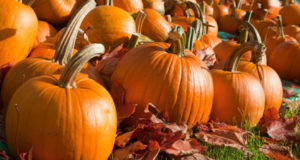
Image source: nutritionovereasy.com
The bread aisle has become one of the most confusing spots in the supermarket. We are faced with a dizzying array of varieties and choices, and all of them claim to be healthy.
“Made with healthy premium milled ingredients”
“Healthy whole grain white bread”
“Healthy 100% natural multi-grain”
Most of us have gotten the message that white bread, once a staple of the American grilled cheese or peanut butter and jelly sandwich, is bad for our health. We have come to believe that if the bread is brown in color and has the word “wheat” in its name, it is good for us.
But what are the real health differences between the newer enriched white and wheat breads, and how can you tell the difference? Well, as you might expect, you need to ignore the package claims and become an ingredient reader. The main ingredient you are looking for is “whole grain.”
In their natural state, whole grains are rich in proteins, carbohydrates, fiber, healthy fats, plant enzymes, antioxidants, vitamins, minerals and many other phytochemicals. Bran is the tough, fibrous outer layer that protects the inside of the whole grain kernel. Starchy endosperm, which is rich in vitamins, minerals, and unsaturated oils, makes up most of the whole grain’s interior.
Whereas the grinding of grain for flour does not remove its beneficial ingredients, processing can and does. Roller mills developed in the late 19th century stripped away the bran and germ and made the grain easier to chew and to digest and easier to store without refrigeration. The process also smashes the small, solid endosperm into tiny particles and removes at least half of the grain’s B vitamins, nearly 90 percent of its Vitamin E, and virtually all of its fiber.
According to the Food and Drug Administration, a whole grain is a grain that keeps its basic form with its key components intact after milling. By law, a bread company can call a grain product “whole grain” if at least 51 percent of its grains are whole.
Discover tried-and-true ways of making wonderful homemade breads for your family…
The designation of “100 percent whole grain” means that a food contains a full serving or more of whole grain in each labeled serving. Some bread companies call one slice a serving size, and others use two slices. Be wary of the term “multigrain.” The term only means the bread contains more than one grain; it does not mean the same thing as “whole grain.”
A growing body of research shows that eating more foods with whole grains and less-processed sources of carbohydrates can have health benefits including lowered LDL (bad cholesterol), decreased risk of diabetes and protection from heart disease, stroke and some forms of cancer.
So how can you tell if certain breads contain the health benefits that whole grains offer? Don’t be fooled by color. In fact, some companies add caramel coloring to their bread to make it look brown and supposedly “healthier.” Instead, look at the package ingredient list.
The first ingredient listed on the package is the most important. If the bread is 100 percent whole wheat, the first ingredient listed in the ingredient label will be whole-wheat flour or 100 percent whole-wheat flour. Don’t settle for the words “wheat flour” or “enriched bleached flour.”
When flour is refined, it loses the most nutritious parts of the grain, including fiber, essential fatty acids, and most of the vitamins and minerals. The “enriched” part of enriched bread means that five nutrients (iron, niacin, thiamin, riboflavin and folic acid) are added back in, but the fiber is not. In fact, most processed white bread has so little fiber that you would have to eat eight pieces of white bread to get the same amount fiber contained in one piece of whole wheat bread.
Fiber aids the digestive system, and a Harvard University study shows that a high-fiber diet decreases the risk of heart attack and stroke.
To help consumers make decisions in selecting bread, the Whole Grains Council has developed what it calls the “Whole Grain Stamp.” The FDA has not approved the rating, so companies are placing it on their products on a volunteer basis. Be careful to compare serving sizes when evaluating these ratings. The three stamps are:
- Good Source: at least 8 grams of whole grain per serving
- Excellent Source: 16 grams or more
- Excellent/100% Whole Grain: at least 16 grams and no refined grains.
Nutrition experts at Harvard Medical School created the Healthy Eating Plate in 2011 to address problems with in the U.S. Department of Agriculture’s My Plate program. The Healthy Eating Plate suggests that one-fourth of your meal plate should include: whole and intact grains, defined as “whole wheat, wheat berries, barley, oats, brown rice, quinoa, and foods made with them, such as whole wheat pasta.” The Harvard research reports that whole wheat bread has a milder effect on blood sugar and insulin than white bread, white rice and other refined grains.
While many children learn to like the doughy taste of white bread, whole wheat bread actually offers more flavor than white bread. Many bread companies have introduced whole grain white breads to sort of help transition consumers’ tastes into eating whole grain bread.
To ensure you’re getting the healthiest bread for your family, ignore the claims and the slogans and read the ingredient list. According to Margaret Wittenberg’s book New Good Food (Ten Speed Press, 2007), here’s what to look for on bread ingredient lists:
- Whole grain flour
- Water, salt and a leavening agent
- Two to three grams of fiber per slice
- Minimal to no sweeteners
It goes to follow then that the shorter the ingredient list, the healthier the bread. Put bread with long lists of words that end in -ic or –ide back on the shelf. Another option is to make your own bread at home. Homemade bread is the best way to maintain taste, freshness and health benefits for your family.
Sign up for Off The Grid News’ weekly email and stay informed about the issues important to you
 Off The Grid News Better Ideas For Off The Grid Living
Off The Grid News Better Ideas For Off The Grid Living




